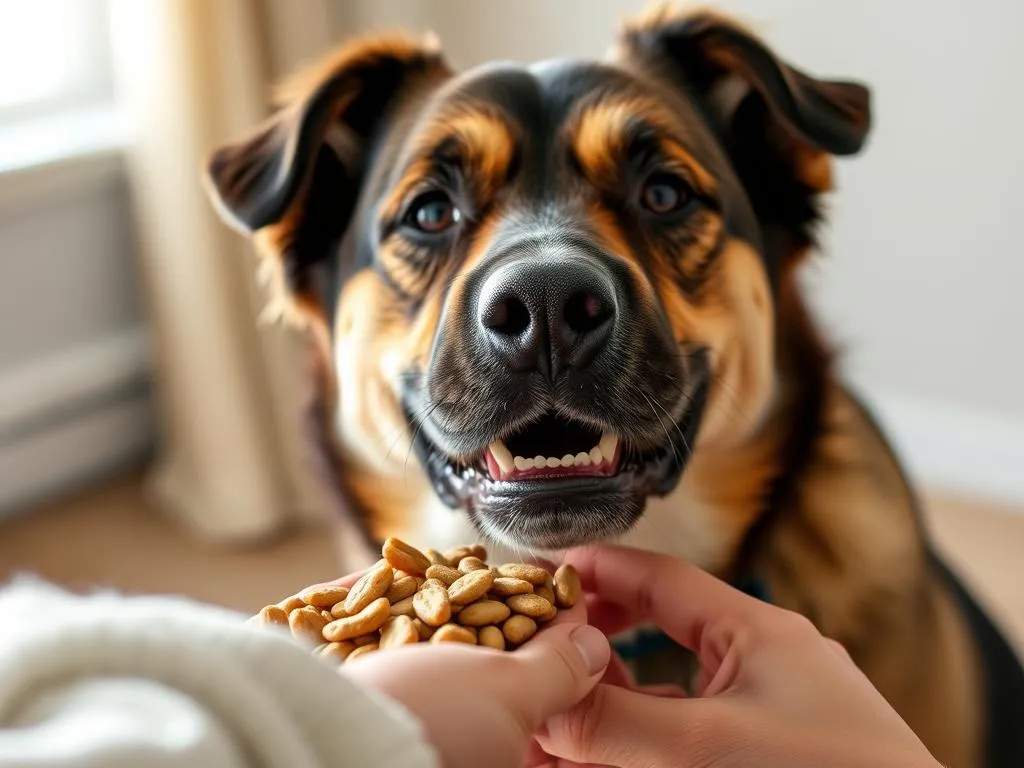
Introduction
Ensuring the health and well-being of our canine companions is a priority for any responsible dog owner. One often-overlooked practice that can significantly enhance a dog’s health is hand feeding. This method not only serves as a unique approach to feeding but also strengthens the bond between owner and pet. In this article, we will explore the benefits of hand feeding your dog, delving into its effects on health, behavior, and the overall human-animal connection.
Understanding Hand Feeding
Definition of Hand Feeding
Hand feeding involves offering food directly from your hand to your dog rather than placing it in a bowl. This practice allows for a more controlled feeding environment and encourages interaction. Unlike traditional bowl feeding, where dogs may eat quickly and without engagement, hand feeding promotes a more mindful eating experience.
Historical Context
Historically, the feeding practices for dogs have varied significantly across cultures. In many societies, dogs were considered family members and were often fed scraps from the table or by hand. This close relationship fostered a deeper bond and ensured dogs received nutrients aligned with their owners’ diets. Over time, as dog food became commercialized, bowl feeding became the norm, but hand feeding has remained a cherished practice among many dog owners.
Benefits of Hand Feeding Your Dog
Improved Digestion
One of the most significant benefits of hand feeding your dog is enhanced digestion. When dogs eat too quickly from a bowl, they often gulp down air along with their food, leading to bloating or gastrointestinal upset. By hand feeding, you can encourage your dog to eat at a slower pace, allowing for better digestion and nutrient absorption.
Enhanced Bonding Experience
Hand feeding fosters a unique emotional connection between you and your dog. The act of offering food directly from your hand creates moments of intimacy and trust. This bonding experience can lead to a more secure and well-adjusted pet. The benefits of this interaction extend beyond feeding time, as it cultivates a relationship based on mutual respect and affection.
Increased Training Opportunities
Another advantage of hand feeding is its potential as a training tool. You can use feeding time to reinforce positive behaviors. For example, rewarding your dog with a treat from your hand when they sit or stay can help establish good habits. This method combines nourishment with training, making it an effective approach to instilling discipline and obedience.
Reduced Food Aggression
Food aggression is a behavioral issue that can arise in dogs, leading to possessive or aggressive behavior over food. Hand feeding can help mitigate this problem by allowing the dog to associate the act of receiving food with positive interactions. By regularly hand feeding, dogs learn to trust that their owner will provide food without competition, reducing anxiety around meal times.
Encouragement of Mindfulness
Hand feeding encourages a slower, more mindful eating pace. This practice not only benefits digestion but also promotes a healthier relationship with food. Dogs become more aware of their eating habits, and slower eating can help prevent obesity. Mindful eating is essential for maintaining a healthy weight and overall well-being.
Monitoring Health and Behavior
Hand feeding provides an excellent opportunity for owners to monitor their dog’s health and behavior closely. Observing how your dog reacts to different types of food or their eating habits can reveal potential health issues early on. For instance, if your dog suddenly refuses to eat or shows signs of discomfort, these indicators might prompt a visit to the veterinarian.
Best Practices for Hand Feeding
Choosing the Right Food
When it comes to hand feeding your dog, selecting the right food is crucial. Opt for high-quality, nutritious dog food that meets your pet’s dietary needs. Consider alternatives such as fresh fruits or vegetables, as long as they are dog-safe. Ensuring that the food is palatable and healthy will enhance the overall experience for your dog.
Establishing a Routine
Consistency is key when it comes to hand feeding. Establishing a routine with regular feeding times can create a sense of security for your dog. Try to maintain the same feeding location to build positive associations with meal times. This routine not only benefits the dog but simplifies the feeding process for owners as well.
Techniques for Hand Feeding
There are several techniques to make hand feeding effective and enjoyable. Start by holding the food in your palm and presenting it at your dog’s nose level. Encourage them to take the food gently. If your dog is hesitant, try offering smaller pieces or using treats they love to entice them. Gradually, they will learn to accept food from your hand.
Safety Precautions
Safety should always be a priority. Avoid any choking hazards by ensuring the food pieces are appropriately sized for your dog. Monitor your dog for any signs of allergies or sensitivities to new foods. If introducing new items, do so gradually to observe any adverse reactions.
Potential Drawbacks of Hand Feeding
Time Consumption
One of the primary drawbacks of hand feeding your dog is the time commitment it requires. Hand feeding can be a lengthy process, especially for dogs that take their time eating. For busy dog owners, balancing this practice with a hectic lifestyle can be challenging. It’s essential to assess whether hand feeding fits comfortably into your daily routine.
Behavior Dependence
While hand feeding can be beneficial, there’s a risk that your dog may become overly reliant on this method. If a dog is accustomed to receiving food only from your hand, they may refuse to eat from a bowl. To prevent this dependence, it’s important to maintain a balanced feeding routine and gradually reintroduce bowl feeding when appropriate.
Limited Feeding Opportunities
Hand feeding may present challenges if you have multiple dogs. In a multi-pet household, it can be difficult to provide each dog with individual attention during meals. To manage this, consider feeding dogs in separate areas or at staggered times to ensure each pet receives the benefits of hand feeding without competition.
Case Studies and Testimonials
Real-Life Examples of Successful Hand Feeding
Numerous dog owners have shared their positive experiences with hand feeding. For instance, one owner reported that after transitioning to hand feeding, her previously anxious rescue dog became more relaxed during meal times and less aggressive towards other pets. This change significantly improved their quality of life and the overall household dynamic.
Veterinarian Insights
Veterinarians often recommend hand feeding as a beneficial practice for both dogs and their owners. Many experts highlight the importance of building trust and improving behavioral issues through this method. Veterinarians encourage owners to incorporate hand feeding into routines, especially for dogs with anxiety or food aggression.
Conclusion
The benefits of hand feeding your dog are numerous and can significantly enhance your dog’s health and behavior. From improved digestion and reduced food aggression to deeper emotional connections, hand feeding offers a multi-faceted approach to dog care. By incorporating hand feeding into your routine, you can foster a nurturing environment that prioritizes your dog’s well-being while strengthening the bond you share. As attentive pet owners, we hold the key to creating a fulfilling and healthy life for our furry companions.
FAQs
Is hand feeding suitable for all dogs?
Yes, while most dogs can benefit from hand feeding, it’s essential to consider individual needs. Dogs with certain health conditions may require specific feeding methods.
Can hand feeding lead to picky eaters?
It’s possible, especially if a dog becomes accustomed to only receiving food from your hand. To prevent this, maintain a balanced routine that includes both hand feeding and bowl feeding.
How can I transition my dog to hand feeding?
Start by offering treats or kibble from your hand during regular feeding times. Gradually increase the amount of food you provide this way until your dog is comfortable eating solely from your hand.
What if my dog refuses to eat from my hand?
If your dog is hesitant, try using their favorite treats or smaller food pieces. Be patient and allow them to adjust to the new feeding method at their own pace.
By understanding and implementing these practices, dog owners can enhance their pets’ lives and foster a healthier, more loving environment.









